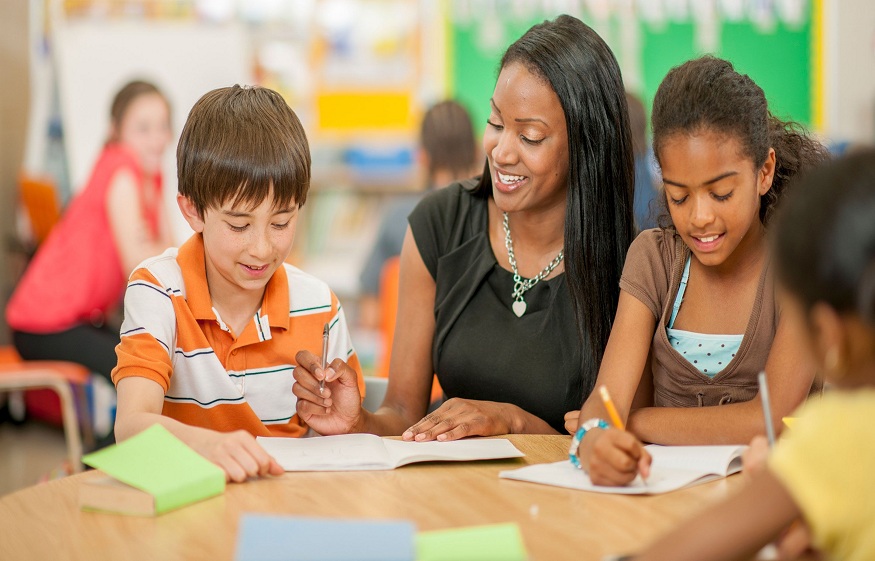Participatory pedagogy: How to practice in class?

Participatory pedagogy is a teaching method in which space is provided for learners to actively create their own meaning through participation.
Participatory pedagogy: definition
Participatory pedagogy is a theory of an educational approach or environmental condition of democratic teaching that potentially represents the ideal of democratic society envisioned by Freire and Dewey . It generates a change of power, a revision of the hierarchy within schools and of the theoretical vision of “the child”.
Participatory pedagogy aims to promote the ideals of equity, equality and co-management with the aim of effectively shaping them in our classrooms so that they are reflected and spread in the school community and in society at large.
This participatory and active approach is essential to holistic education, as it can help encourage student voice, exploration and critical engagement, and peer-to-peer learning. It moves away from the teacher, the sole transmitter of knowledge, by allowing students to contribute to the construction of knowledge.
1. Collaboration and cooperation
Collaboration is a philosophy of interaction. It is a personal way of life where individuals are responsible for their actions, including learning.
In collaboration, model groups assume almost total responsibility, i.e. each group member has a specific task, while cooperation is an interaction structure designed to facilitate the accomplishment of an end product. or a specific goal through people working together in groups.
Collaboration or cooperation has become a trend of the 21st century. Society’s need to think and work together on critical issues has increased, shifting the emphasis from individual effort to group work, from independence to community. Despite the terms, the theoretical background based on the philosophy of participation is taken into consideration in this research, because this method creates an environment in which learners and teachers, learners and learners teach and learn from each other in a equity by incorporating learner-centred principles into their programs and curricula.
2. The student is the center of learning
This active pedagogy is characterized by active engagement, participation and the construction of knowledge. And also participation in a learning experience through collaborative learning, co-learning and engagements.
In participatory pedagogy, learners are placed at the center and reciprocal processes between learners are therefore essential to produce more and stronger relationships in order to carry out learning activities for continuous learning by producing knowledge, harvesting knowledge to generate more new ideas and contribute to the community. This promotes equality in learning, overcomes shyness or discomfort with talking face-to-face and gives each participant the same chance to express themselves.
3. Group work
The participatory approach involves small heterogeneous teams. They are usually four or five members. They work together towards a group task in which each member is individually responsible for part of an outcome that can only be achieved if the members work together. In other words, the members of the group are positively interdependent.
Each member of a team is responsible not only for learning what is taught, but also for helping their teammates learn, thereby creating an atmosphere of achievement. The idea of participation refers to the action of taking part in activities and projects, and the action of sharing the activities of a group. The participatory process promotes mutual learning. The participatory learning strategy finds its basic theory in socio-constructivism as well as in the participatory learning approach.
The difference between participatory and traditional pedagogy
Participatory pedagogy aims to involve students. It puts them in charge of their own education. This makes learning active and participatory, and education more equitable. Among the fundamental elements of participatory pedagogy are community, collaboration and social justice.
Traditional pedagogy vs participatory pedagogy
Unlike traditional pedagogy which uses a top-down model of information delivery and treats students as passive receivers of knowledge, research shows that active learning enhances absorption of complex ideas through practice.
Introduction of the participatory approach in teaching
Participatory pedagogy focuses on the learner. It encourages learning by doing. In addition, she uses small groups, concrete materials, open questions and peer teaching. For example, learners use hands-on activities to understand mathematical concepts. They can also work together to solve problems, ask and answer questions.
Participatory and active pedagogy can also be used with teachers and education authorities. It helps them analyze their needs and identify solutions. And also to develop and implement an action plan. In these contexts, community participation, coordination and analysis can be included.
Conclusion
Participatory pedagogy includes a set of didactic strategies and techniques. It aims to promote a more active role of students in the learning process. This involves arousing students’ interest in the theoretical lessons. The teacher encourages group discussions and critical reflections. It also involves them in more practical activities. The goal is to connect school results to real life problems. And also to understand the impact of individual actions on the community.







